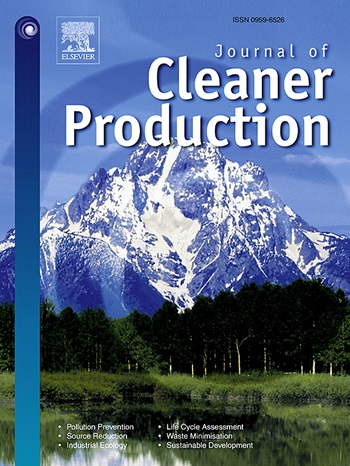Strategic Nuclear Waste Management for Reducing Environmental Impacts: Innovative Decomposed Fuzzy Methods
IF 9.7
1区 环境科学与生态学
Q1 ENGINEERING, ENVIRONMENTAL
引用次数: 0
Abstract
In the face of global environmental pollution and efforts to reduce carbon emissions, nuclear energy is gaining attention as an effective method for low-carbon energy production. However, the management of nuclear waste presents diverse challenges due to varying levels of contamination and the severity of its impacts on the environment, humans, and animals. This research aims to develop a model of nuclear waste management challenges and subsequently evaluate these challenges through the design and development of Decomposed Fuzzy DEMATEL and Decomposed Fuzzy SWARA methods. To reach this goal, four steps were followed: A scoping review was used to find problems with managing nuclear waste; the TISM method was used to create a conceptual model; the Decomposed Fuzzy-SWARA method was used to find the biggest problems; and the Decomposed Fuzzy-DEMATEL method was used to find the connections between criteria. Economic liability (CH33) and risk assessment and management (CH22) are the most important challenges in nuclear waste management, according to the TISM method. The Decomposed Fuzzy-SWARA method results show that social, management, and political challenges (0.23) are the most critical in nuclear waste management. Decomposed fuzzy DEMATEL results reveal that social, management, and political challenges, as well as environmental challenges, are the most influential, while economic challenges are the most affected. The novelty of this research lies primarily in presenting a comprehensive model of nuclear waste management challenges, followed by the development of two methods, SWARA and DEMATEL, in a decomposed fuzzy set for the first time in fuzzy science. This study will contribute to the insights, strategies, and critical priorities of managers and stakeholders in nuclear waste management by providing a macro perspective. Furthermore, by creating theoretical developments in fuzzy sets, it will assist researchers in various scientific fields in employing precise tools for their prioritizations. One of the global implications of this research is its contribution to reducing environmental damages caused by nuclear waste leakage.

减少环境影响的战略性核废料管理:创新的分解模糊方法
面对全球环境污染和减少碳排放的努力,核能作为一种有效的低碳能源生产方式正受到人们的关注。然而,由于不同程度的污染及其对环境、人类和动物的严重影响,核废料的管理面临着各种各样的挑战。本研究旨在通过设计和开发分解模糊DEMATEL和分解模糊SWARA方法,建立核废料管理挑战的模型,并随后对这些挑战进行评估。为了实现这一目标,采取了四个步骤:进行范围审查以发现管理核废料的问题;采用TISM方法建立概念模型;采用分解模糊- swara方法寻找最大问题;采用分解Fuzzy-DEMATEL方法寻找准则之间的联系。根据TISM方法,经济责任(CH33)和风险评估与管理(CH22)是核废料管理中最重要的挑战。分解Fuzzy-SWARA方法结果表明,社会、管理和政治挑战(0.23)是核废料管理中最关键的挑战。分解后的模糊DEMATEL结果显示,社会、管理和政治挑战以及环境挑战的影响最大,而经济挑战的影响最大。本研究的新颖之处主要在于提出了核废料管理挑战的综合模型,并在模糊科学中首次在分解模糊集中提出了SWARA和DEMATEL两种方法。本研究将提供宏观视角,有助于管理者和利益相关者在核废料管理方面的见解、战略和关键优先事项。此外,通过在模糊集合中创建理论发展,它将帮助各个科学领域的研究人员使用精确的工具进行优先级排序。这项研究的全球意义之一是它有助于减少核废料泄漏造成的环境损害。
本文章由计算机程序翻译,如有差异,请以英文原文为准。
求助全文
约1分钟内获得全文
求助全文
来源期刊

Journal of Cleaner Production
环境科学-工程:环境
CiteScore
20.40
自引率
9.00%
发文量
4720
审稿时长
111 days
期刊介绍:
The Journal of Cleaner Production is an international, transdisciplinary journal that addresses and discusses theoretical and practical Cleaner Production, Environmental, and Sustainability issues. It aims to help societies become more sustainable by focusing on the concept of 'Cleaner Production', which aims at preventing waste production and increasing efficiencies in energy, water, resources, and human capital use. The journal serves as a platform for corporations, governments, education institutions, regions, and societies to engage in discussions and research related to Cleaner Production, environmental, and sustainability practices.
 求助内容:
求助内容: 应助结果提醒方式:
应助结果提醒方式:


